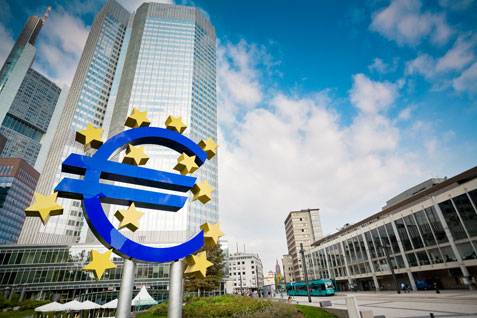
The Euro Moves made a significant stride in European trade, showcasing a positive trajectory against its major counterparts, particularly the dollar, as it managed to hold steady above the one-week low mark. Despite some underlying concerns, the euro’s recent performance has been relatively optimistic, indicating potential resilience in the face of market pressures.
Factors Affecting the Euro Moves
In the intricate world of foreign exchange, several factors influence the Euro’s ebb and flow. The most prominent among these is the persistent interest rate gap between the European Central Bank (ECB) and the Federal Reserve, which continues to cast a shadow over the Euro’s value. The European economy is currently facing the challenging prospect of another interest rate hike by the ECB, further exacerbating the situation.
Meanwhile, recent data have pointed towards a burgeoning trend in the US economy, amplifying the likelihood of another interest rate hike by the Federal Reserve. This, in turn, has created a palpable disparity between the interest rates of the US and Europe, significantly impacting the Euro’s position in the market.
Recent Trends in EUR/USD Exchange Rates
The EUR/USD exchange rates have been a focal point of market observers, especially considering the Euro’s recent performance. Despite facing some setbacks, the Euro managed to register a commendable 0.25% rise, currently standing at 1.0538. However, this gain comes after the Euro suffered a 0.75% loss against the dollar last week, revealing a fragile balance in the Euro’s market position.
European Central Bank’s Stance on Interest Rates
The European Central Bank’s recent stance on interest rates has added to the prevailing challenges faced by the Euro. Several ECB officials have underscored the increasing control over inflation, leading to dim prospects for an additional interest rate hike within the Eurozone this year. Such cautionary signals have further deepened the Euro’s struggle to gain a strong foothold in the market.
Effect of US Inflation Data on Market Sentiment and Euro Moves
In contrast, the United States has experienced an upward trajectory in inflation data, significantly impacting market sentiment. The likelihood of another 0.25% interest rate hike by the Federal Reserve in the upcoming months has risen, with November and December seeing increased odds of such a move.
Probability of US Interest Rate Hikes after Euro Moves
The possibility of continuous interest rate hikes in the US has set the stage for a prolonged period of high interest rates throughout the year, solidifying the dollar’s position in the foreign exchange market.
Comparative Analysis of Interest Rates
Currently, the interest rate gap between the US and Europe stands at 100 basis points, the narrowest it has been since May 2022. Market analysts anticipate this gap to widen further to 125 basis points before the year’s end, painting a challenging picture for the Euro’s stability.
Implications of the Widening Interest Rate Gap
The widening interest rate gap is expected to have significant implications for the Euro, potentially triggering a cascade of market adjustments and prompting a reassessment of investment strategies for stakeholders operating within the European market.
Market Sentiment and the Euro’s Future Outlook
Despite the prevailing challenges, market sentiment remains cautiously optimistic about the Euro’s resilience. While the current scenario indicates a period of volatility, market analysts and experts are closely monitoring developments to ascertain the Euro’s future trajectory in the global market.
The Interplay Between Euro and Dollar: A Historical Perspective
Understanding the complex interplay between the Euro and the dollar requires a comprehensive analysis of historical patterns and key events that have shaped their relationship over time. Several historical occurrences have influenced their dynamics, shaping the current landscape of the foreign exchange market.
Market Speculations and Predictions for Euro
Market speculations and predictions for the Euro continue to be a topic of interest for investors and analysts alike. In light of recent developments, various speculations have emerged, attempting to forecast the Euro’s potential movements and assess the long-term impact of existing market trends on the European economy.
Potential Impacts of Political and Geopolitical Factors
Additionally, the Euro’s trajectory remains susceptible to political and geopolitical factors, further complicating the already intricate economic landscape. The influence of global events and political decisions on the Euro’s value underscores the need for a comprehensive understanding of the broader context within which the Euro operates.
Strategies for Investors in the Current Euro Market
Given the evolving nature of the Euro market, investors are advised to adopt a strategic approach that accounts for the dynamic shifts and fluctuations. Employing robust risk management strategies and staying informed about market trends and policy developments can help investors navigate the uncertainties associated with the Euro’s performance.
Challenges and Opportunities for the Eurozone Economy
The Eurozone economy faces a confluence of challenges and opportunities, necessitating a nuanced approach to navigate the current economic climate. While challenges persist, opportunities for growth and stability also present themselves, underscoring the importance of prudent economic policies and strategic decision-making within the Eurozone.
Conclusion: Euro’s Resilience Amidst Volatility
In conclusion, despite the ongoing volatility and the challenges posed by the interest rate gap, the Euro has demonstrated commendable resilience in the face of market pressures. While the road ahead remains uncertain, the Euro’s ability to withstand the current challenges speaks to its enduring strength and the potential for sustainable growth in the long run.
